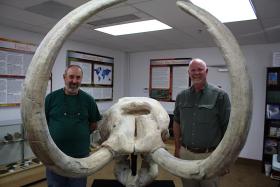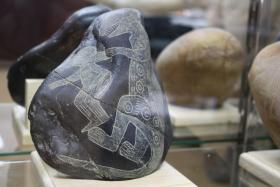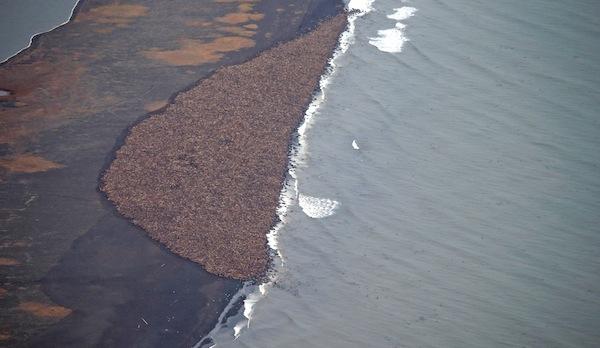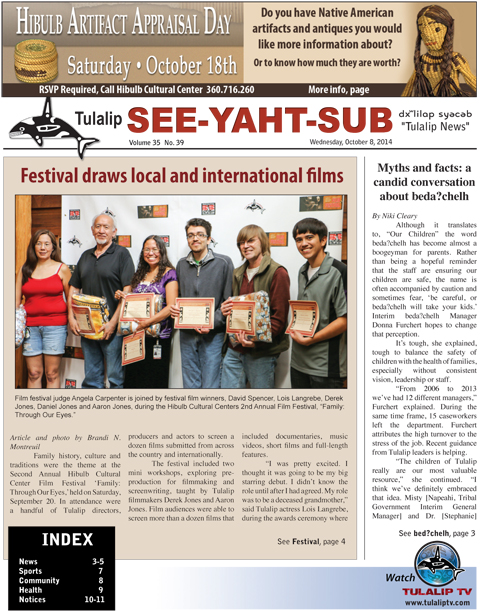Do you have Native American artifacts and antiques you would like more information about? Perhaps you would like to know how much they are worth? Bill Lee, an accredited appraiser will be providing information and current market values on items, Saturday, October 18 at the Tulalip Hibulb Cultural Center.
American Indian Fry Bread Hints
Fry bread is an incredibly popular food; everyone who tried them loves them. You might love it, but did you know it originated in a painful way?

Source: Native American Encyclopedia
If you have ever attended a Native American PowWow you have probably noticed vendors selling a large doughy piece of bread called fry bread. Fry bread is an incredibly popular food, very much like an unsweetened funnel cake. American Indian fry bread might seem like a traditional food but it originated in a painful way. The most helpful hint that you can be given about Native American fry bread is to understand how and why this food came about. Native American fry bread may be a symbol of their culture. However, its beginning was steeped in tragedy.
History
Fry bread was first made approximately 144 years ago after the United States forced the Navajo to complete the “Long Walk,” which was a 300 mile walk where many people lost their lives. These Navajo people were moved to a land that was not fertile for traditional vegetables and beans. They were then forced to live on government canned goods: flour, sugar, salt, baking powder, powdered milk and lard. The Navajo people began using what they had and they created fry bread. Fry bread became a symbol of their survival and is always present at PowWows.
Ingredients
Fry bread is made from very simple ingredients. In order to make a dozen fry breads you will need: 2 cups sifted flour, 2 teaspoons baking powder, 1/2 teaspoon salt, 1 tablespoon shortening, approximately 1 cup water, and approximately one cup of oil. The recipe, as well as the style of cooking, has remain unchanged.
Preparation
First sift the flour, baking powder and salt together. Then add the shortening — a helpful hint is to use a pastry blender which will help incorporate the wet and dry ingredients. If you don’t have a pastry blender use butter knives. The next step is important, add just enough water to make a soft dough. If you add too much your dough won’t have the right consistency. Knead dough until smooth. Roll dough into small balls. Cover dough with a damp towel for ten minutes. Roll the ball in your hands until each ball flattens into a 4-inch round discs. It is important that you cook the dough in a skillet to keep the right texture of fry bread. Pour oil in the skillet and heat, ensure that you have at least an 1 inch of hot oil. Fry each round of dough until it becomes a light golden brown, turn it over once. The bread will puff up as it fries. Drain the fry bread on a paper towel when it’s done.
Serving
Fry bread is delicious by itself or you could serve it a multitude of ways. Drizzle the fry bread with a tiny bit of honey and powdered sugar or just add a little bit of jam. Many people cut a slit through the fry bread and stuff it with different foods including ground beef and beans. Another traditional recipe is the Indian Taco, the fry bread replaces the corn tortilla of a traditional taco. Fry bread is a very good bread but you should be mindful of what you are eating. Remember that this food is a story of resiliency and survival .
How to Research Native American Roots
By Kimberly Powell, Native American Encyclopedia
Whether you want to become an enrolled member of a federally recognized tribe, verify a family tradition that you descended from an American Indian, or just want to learn more about your roots, researching your Native American family tree beings just like any other genealogy research – with yourself.
Starting Your Climb Up the Family Tree
Unless you have a large collection of facts on your Indian ancestor, including names, dates, and tribe, it is usually not helpful to begin your search in Indian records. Learn everything that you can about your parents, grandparents, and more distant ancestors, including ancestral names; dates of birth, marriages, and death; and the places where your ancestors were born, married, and died.
Tracking Down the Tribe
During the initial phase of your research, the goal, especially for tribal membership purposes, is to establish and document the relationships of Indian ancestors and to identify the Indian tribe with which your ancestor may have been affiliated. If you’re having trouble finding clues to your ancestor’s tribal affiliation, study the localities in which your Indian ancestors were born and lived. Comparing this with Indian tribes that historically resided in or currently live in those geographical areas may help you to narrow down the tribal possibilities. The Tribal Leaders Directory published by the U.S. Bureau of Indian Affairs lists all 562 federally recognized American Indian Tribes and Alaska Natives in a PDF document. Alternatively, you can access this same information through an easy to browse database of Federally Recognized American Indian Tribes, from the American Indian Heritage Foundation. John R. Swanton’s, “The Indian Tribes of North America,” is another excellent source of information on more than 600 tribes, sub-tribes, and bands.
Bone Up on the Background
Once you’ve narrowed your search to a tribe or tribes, it is time to do some reading on tribal history. This will not only help you understand the traditions and culture of the tribe in question, but also evaluate your family stories and legends against historical facts. More general information on the history of Native American tribes can be found online, while more in-depth tribal histories have been published in book form. For the most historically accurate works, look for tribal histories published by University Press.
Next Step – National Archives
Once you’ve identified the tribal affiliation of your Native American ancestors, it is time to begin research in records about American Indians. Because the U.S. federal government interacted frequently with the Native American tribes and nations during the settlement of the United States, many useful records are available in repositories such as the National Archives. The Native American collection at the National Archives includes many of the records created by branches of the Bureau of Indian Affairs, including annual tribal census rolls, lists relating to Indian removal, school records, estate records, and claims and allotment records. Any American Indian who fought with federal troops may have a record of veteran’s benefits or bounty land. For more information on the specific records held by the National Archives, visit their Native American Genealogy guide or check out “Guide to Records in the National Archives of the United States Relating to American Indians,” compiled by archivist Edward E. Hill.
If you want to do your research in person, most of the main tribal records are stored at the National Archives Southwest Region in Fort Worth, Texas. Even more accessible, some of the most popular of these records have been digitized by NARA and placed online for easy searching and viewing in the Archival Research Catalog (ARC). Online Native American records at NARA include:
- Index to the Final (Dawes) Rolls of the Five Civilized Tribes
- Index to Applications Submitted for the Eastern Cherokee Roll of 1909 (Guion-Miller Roll)
- Wallace Roll of Cherokee Freedmen in Indian Territory, 1890
- Kern-Clifton Roll of Cherokee Freedmen, January 16, 1867
- 1896 Citizenship Applications
>>Links to the above digitized documents and other online Indian records. Bureau of Indian Affairs
If your ancestors had land in trust or went through probate, the BIA field offices in selected areas throughout the United States may have some records concerning Indian ancestry. However, the BIA field offices do not maintain current or historic records of all individuals who possess some degree of Indian blood. The records the BIA holds are current rather than historic tribal membership enrollment lists. These lists (commonly called “rolls”) do not have supporting documentation (such as birth certificates) for each tribal member listed. The BIA created these rolls while the BIA maintained tribal membership rolls.
Source: about.com
Washington Governor Wants More Done To Ensure Oil Train Safety
By Liz Jones, KUOW
SEATTLE — Oil trains moving through Washington state need upgrades, and slower speed limits. That’s part of Washington Gov. Jay Inslee response to a new state report released Wednesday about the risks of oil transport. The report also lays out some key recommendations for the Legislature
“Sobering” is how Inslee summed up this draft report. In it, the State Department of Ecology points out more oil is moving through Washington by pipeline and railways. And with that, comes a cascade of risks…to public health, safety, and the environment.
Inslee agreed more needs to be done to prevent a major spill or a tragic train derailment.
“When these things go, I don’t want to use the term bomb. But I don’t know what is a better metaphor,” he said.
The metaphor holds, considering the inferno caused by an oil train explosion last year in the Canadian province of Quebec. It killed 47 people.
“This shouldn’t be too difficult for legislators to understand that we don’t intend to allow this risk to continue of oil blowing up in railroads next to Qwest Field and Safeco Field,” Inslee said.
The report recommends that state lawmakers add funds for a whole host of things, including:
- More train inspectors, with beefed up authority
- More oil spill response plans, equipment and training
- Additional fees for railroads to pay for more safety inspections
The recommendations add up to more than $13 million for the next two-year budget.
Inslee said the report will help guide his legislative proposal for the upcoming session.
Beyond that, Inslee noted the feds regulate rail transport. And he’s called on them to lower the speed limits on oil trains and to move faster on required upgrades for old rail cars.
The public will have a chance to weigh in on these recommendations at meetings later this month.
This was first reported for KUOW.
Sophisticated 600-year-old canoe discovered in New Zealand

By Megan Gannon, FoxNews.com
Sophisticated oceangoing canoes and favorable winds may have helped early human settlers colonize New Zealand, a pair of new studies shows.
The remote archipelagos of East Polynesia were among the last habitable places on Earth that humans were able to colonize. In New Zealand, human history only began around 1200-1300, when intrepid voyagers arrived by boat through several journeys over some generations.
A piece of that early heritage was recently revealed on a beach in New Zealand, when a 600-year-old canoe with a turtle carved on its hull emerged from a sand dune after a harsh storm. The researchers who examined the shipwreck say the vessel is more impressive than any other canoe previously linked to this period in New Zealand. [The 9 Craziest Ocean Voyages]
Separately, another group of scientists discovered a climate anomaly in the South Pacific during this era that would have eased sailing from central East Polynesia southwest to New Zealand. Both findings were detailed Sept. 29 in the journal Proceedings of the National Academy of Sciences.
Canoe on the coast
The canoe was revealed near the sheltered Anaweka estuary, on the northwestern end of New Zealand’s South Island.
“It kind of took my breath away, really, because it was so carefully constructed and so big,” said Dilys Johns, a senior research fellow at the University of Auckland in New Zealand.
The hull measured about 20 feet long and it was made from matai, or black pine, found in New Zealand. The boat had carved interior ribs and clear evidence of repair and reuse. Carbon dating tests showed that the vessel was last caulked with wads of bark in 1400.
Johns and colleagues say it’s likely that the hull once had a twin, and together, these vessels formed a double canoe (though the researchers haven’t ruled out the possibility that the find could have been a single canoe with an outrigger). If the ship was a double canoe, it probably had a deck, a shelter and a sail that was pitched forward, much like the historic canoes of the Society Islands (a group that includes Bora Bora and Tahiti) and the Southern Cook Islands. These island chains have been identified as likely Polynesian homelands of the Maori, the group of indigenous people who settled New Zealand.
The boat was surprisingly more sophisticated than the canoes described centuries later by the first Europeans to arrive in New Zealand, Johns told Live Science. At the time of European contact, the Maori were using dugout canoes, which were hollowed out from single, big trees with no internal frames. In the smaller islands of Polynesia, boat builders didn’t have access to trees that were big enough to make an entire canoe; to build a vessel, therefore, they had to create an elaborate arrangement of smaller wooden planks.
The newly described canoe seems to represent a mix of that ancestral plank technology and an adaptation to the new resources on New Zealand, since the boat has some big, hollowed-out portions but also sophisticated internal ribs, Johns and colleagues wrote.
The turtle carving on the boat also seems to link back to the settlers’ homeland. Turtle designs are rare in pre-European carvings in New Zealand, but widespread in Polynesia, where turtles were important in mythology and could represent humans or even gods in artwork. In many traditional Polynesian societies, only the elite were allowed to eat turtles, the study’s authors noted.
Shifty winds
A separate recent study examined the climate conditions that may have made possible the long journeys between the central East Polynesian islands and New Zealand. Scientists looked at the region’s ice cores and tree rings, which can act like prehistoric weather stations, recording everything from precipitation to wind patterns to atmospheric pressure and circulation strength. [10 Surprising Ways Weather Changed History]
Because of today’s wind patterns, scholars had assumed that early settlers of New Zealand would have had to sail thousands of miles from East Polynesia against the wind. But when the researchers reconstructed climate patterns in the South Pacific from the year 800 to 1600, they found several windows during the so-called Medieval Climate Anomaly when trade winds toward New Zealand were strengthened.(That anomaly occurred between the years 800 and 1300.)
“There are these persistent 20-year periods where there are extreme shifts in climate system,” the study’s head author, Ian Goodwin, a marine climatologist and marine geologist at Macquarie University in Sydney, told Live Science. “We show that the sailing canoe in its basic form would have been able to make these voyages purely through downwind sailing.”
Goodwin added that a downwind journey from an island in central East Polynesia might take about two weeks in a sailing canoe. But the trip would take four times that if the voyagers had to travel upwind.
And Then There Were 4: Indigenous Names for New State Ferry
The Washington State Transportation Commission is considering four indigenous names for its newest 144-car state ferry.
The names proposed, in alphabetical order, are: Chimacum, Cowlitz, Sammamish, and Suquamish. Construction of the ferry is scheduled to begin this fall. The commission will accept public comment on the proposed names in October and is scheduled to announce its selection on November 19.
Semi-finalists that didn’t make the final list: Illahee, the name of an earlier state ferry; Tukwila, a Duwamish place name; Nawt-sa-mat, the name of a new regional coalition of Natives and non-Natives working to protect the environmental health of the Salish Sea; and Taina, the name of the hawk that leads the Seattle Seahawks football team out of the tunnel before its home games.
RELATED: Eight Indigenous Names Proposed for New State Ferry
Chimacum, Cowlitz, Sammamish and Suquamish are First Peoples of the state.
According to the Quileute Tribe, the Chimacum were a remnant of the Quileute. They were signatories to the 1855 Treaty of Point No Point, and many S’Klallam and Skokomish peoples can trace their ancestry to the Chimacum. A town in Jefferson County is named Chimacum.
The Cowlitz Tribe “provided key assistance with pioneer transportation and commercial activities in what some historians refer to as the Cowlitz Corridor, which linked the Columbia River valley with South Puget Sound communities long before Washington Territory was established,” the commission reported. “The Washington Territorial Legislature honored the Tribe by naming one of our earliest counties for them.”
The largest Sammamish village was tlah-WAH-dees at the mouth of the Sammamish River. “In 1855, the United States government signed the Treaty of Point Elliott with the putative leaders of most of the Puget Sound Tribes and they were relocated,” the commission reported. “Descendants of the Sammamish dispersed into other tribes, including the Suquamish, Snoqualmie and Tulalip.”
The Suquamish people have lived in Central Puget Sound for approximately 10,000 years. The major Suquamish winter village was at Old Man House on the shoreline of Agate Passage at d’suq’wub, meaning “clear salt water.” The Suquamish name translates into the “people of the clear salt water” in Lushootseed. Chief Seattle, namesake of the city and first signer of the Point Elliott Treaty, was an ancestral leader of the Suquamish Tribe born in 1786 at the Old Man House Village.
Read more at http://indiancountrytodaymedianetwork.com/2014/10/03/and-then-there-were-4-indigenous-names-new-state-ferry-157132
Native Alaska Village of Point Lay Hailed for Stewardship of 35,000 Walruses
With 35,000 walruses camped out on the edge of town, the 250-population Native village of Point Lay, Alaska has been thrust onto the world stage.
And, true to their custom, the residents have stepped up—not to bask in their potential 15 minutes of fame, but to embrace their traditional role as environmental stewards.
“These locals, these people, without a lot of funding or anything, have taken on this stewardship and protection of the haulout,” said Joel Garlich-Miller, a walrus specialist for the Marine Mammals Management department of the U.S. Fish and Wildlife Service, in a telephone interview with Indian Country Today Media Network. “They’re front-line conservationists.”
The walruses began arriving in mid-September, as they had been for the past few years. You can hear them from the village, residents said in a 2012 community workshop held with Garlich-Miller, community elders and an array of scientists. It is common for walruses to “haul out,” as it’s called, and take a break from feeding in the open sea, usually by pulling themselves onto ice floes. But with the summer ice extent dwindling drastically in the Arctic, a growing number have had to settle for land.
RELATED: Video: Watch Thousands of Walruses Forced Onto Alaskan Shores by Climate Change
This has been happening off and on for years, but of late it has become much more pronounced. On September 30, scientists from the National Oceanic and Atmospheric Administration conducted their annual flyover to observe Alaska’s marine wildlife from the air. Catching sight of the mass of walruses clustered onto a sliver of northwestern Alaska coast, they snapped some spectacular photos and posted them on the web, noting that a lack of sea ice had forced walruses onto land.
With all the attention being paid to climate change over the past couple of weeks, between the People’s Climate March of September 21 and the United Nations Climate Summit two days later, the world’s attention was riveted. The sea ice had reached its lowest extent for the year a couple of weeks earlier, on September 17, the sixth-lowest minimum on record, according to the World Wildlife Fund (WWF).
“The massive concentration of walruses onshore—when they should be scattered broadly in ice-covered waters—is just one example of the impacts of climate change on the distribution of marine species in the Arctic,” said Margaret Williams, managing director of the WWF’s Arctic program, in a statement on September 18. “The sharp decline of Arctic sea ice over the last decade means major changes for wildlife and communities alike. Today’s news about the sea ice minimum is yet another reminder of the urgent need to ratchet down global greenhouse gas emissions—the main human factor driving massive climate change.”
The walrus, Garlich-Miller explained, is “typically considered an ice-dependent species.” They are not suited to an open-water lifestyle and must periodically haul out to rest.
“Traditionally during the summer months, broken sea ice has persisted through the Chukchi Sea during the entire summer, and walruses have typically remained offshore,” he said in a conference call with reporters on October 1.

But in recent years, Garlich-Muller said, the Chukchi Sea has become entirely ice-free by the end of summer. The number of walruses seen on shore has been growing. Nowadays, he said, tens of thousands of walruses haul out regularly in Russia as well. Numerous researchers have been monitoring this since its exacerbation, but the phenomenon of land haulouts is nothing new. What is new is the extent of their use of land, researchers said.
“Walrus have always hauled out on land, in small numbers in Alaska, and in much larger groups (tens of thousands) in Russia,” said anthropologist and Arctic researcher Henry Huntington to ICTMN in an e-mail. “The large haulout at Point Lay started in 2007, and has occurred most years since then, except when sea ice has persisted in the Chukchi Sea. So this is a relatively new phenomenon, and is almost certainly related to the loss of summer sea ice (meaning the ice is too far from shallow waters where walrus can feed, so they instead move to land in late summer/early fall when the ice is at is smallest extent).”
The concern now, Garlich-Muller said, is the walruses’ safety. A few problems arise when they’re on land that tend not to plague them on the ice. For one thing, there are more predators lurking. For another, the walruses are in much more crowded conditions, which can facilitate the spread of disease. Moreover, disturbing them causes the potential for stampedes, which could injure or kill the animals, especially the calves. Their vulnerability, Garlich-Muller said, is proportional to the size of the herd.
What disturbs them? Gunfire, aircraft, predators such as polar and grizzly bears, and human activity. Minimizing disturbance has become a major focus of the USFWS office in Alaska over the past few years, Garlich-Miller told reporters.
This is where Point Lay comes in.
“Some of the best and most successful conservation efforts that we’ve seen to date have occurred at the local level,” Garlich-Miller told reporters on October 1. “The community of Point Lay in particular has shown a great stewardship ethic at the haulout. They’ve sort of taken it under their wing. They’ve worked with the local flights in and out of their community to reroute aircraft landing and takeoff routes. The community, when walruses are present they work with their tribal members not to motor by the haulout with boats. They’ve changed their hunting patterns—although they are a subsistence-hunting community and legally entitled to hunt walruses, they’ve refrained from hunting at these large haulouts, where disturbance events can lead to lots of unnecessary mortality.”
Point Lay officials fended off reporters’ requests for visits and interviews. They were too busy protecting the herd.
“The Native VIllage of Point Lay IRA Council respectfully declines any interviews at this present time,” the village’s offices said in an e-mail to Indian Country Today Media Network. “We, as a tribe, did not wish for this event to be so widely publicized. Our community is a small, close knit, subsistence only community.”
Regardless, they remain the unsung heroes of the walrus haulout.
Read more at http://indiancountrytodaymedianetwork.com/2014/10/03/native-alaska-village-point-lay-hailed-stewardship-35000-walruses-157175?page=0%2C1
Founders Of Idaho Creation Museum Urge Visitors To ‘Think Critically’
By Jessica Robinson, NW News Network
A group in the Boise area is in the midst of fundraising for a new attraction in the Northwest. It’ll be called the Northwest Science Museum.

They envision a 350,000-square-foot space full of fossils, rocks and animal specimens. But this isn’t your usual natural history museum. It’s designed by creationists.
Most scientists, textbooks, and natural history museums would tell you the Earth is several billion years old, that plant and animal species evolved over time, and that dinosaurs died out millions of years before our human ancestors appeared. You might even take that as a given. But a large segment of the population believe something else happened.
It’s the story Doug Bennett wants to tell in the museum.
Creationist view
“The first thing you’re going to see as you walk up to the building is a full-scale Noah’s Ark,” Bennett pointed out.
That ark, and Noah’s flood, are key to the way Bennett sees the history of the earth. To him, it explains many of the geological formations and how fossils were distributed. Bennett is among the 42 percent of Americans who have a creationist view of the world. He believes the earth and all life were created in their present form in one week, about 6,000 years ago.
To Bennett, evolution isn’t about science, it’s about morality.
“If you can make up a system that says there is no god, that things just happen by chance, then we’re not accountable to any higher being,” he said. “And so you can do what you want and have no consequence.”
So far, Bennett and the other founders have set up a smaller version of what they hope to build – they call it the Vision Center. They’ve rented a space in a business park at the edge of Boise and put in displays, including a huge mastodon skull whose tusks fill the center of the room.
‘The most controversial stones in the world’
Bennett said the idea for the museum was an inspiration from God.

“I think everybody needs to see the evidence we will have in the museum,” he added. “One of the things we have here in this vision center is probably the most controversial stones in the world. Because they show man and dinosaurs interacting.”
In one of the glass cases, Stan Lutz, one of the other founders, pointed out a collection of “Ica stones,” which he said are ancient stones from Peru.
“This stone right here, you can see there’s a man on it riding on a triceratops dinosaur,” he said.
Lutz pointed to a tan colored stone with a man on a lizard-like creature.
“We have rocks showing at least 14 species of dinosaur that are all accurately drawn,” he said.
This isn’t the only evidence they’ll display. In fact, Bennett said they’ll even show the argument from the other side, what he calls the “naturalistic perspective.”
“We want to bring that out and say, ‘Ok, people. Let’s make your choice here.’ Don’t just believe because you’re being told that. Think for yourself. Use critical thinking and think, does this make sense?” Bennett said. “Or is it better to believe what the Bible says — that God created all things.”
The museum in Idaho joins at least a dozen creation museums in other states trying to provide a counterweight to prevailing scientific thought. One museum near Mt. Saint Helens uses the mountain’s explosion as proof that the earth can change rapidly. This year, the Creation Museum in Kentucky hosted a much-discussed debate between the museum’s founder and science personality Bill Nye.
Creationism vs intelligent design
But Casey Luskin, from the Discovery Institute in Seattle, said in many ways, the real debate has moved on.
“I definitely think the conversation about origins has shifted a lot, over the last probably 15 or so years,” he said.
The Discovery Institute is one of the main proponents of intelligent design. Like creationism, intelligent design says the complexity of life was directed by some sort of intelligent cause. But beyond that Luskin draws a sharp line between intelligent design and creationism.
“Intelligent design starts with the data. Whereas creationism starts with the Bible,” he explained. “Intelligent design doesn’t say the earth is 6,000 years old, whereas creationism — that’s a major claim that creationists will make. And so, when people conflate the two, it’s an attempt to try to dismiss the arguments for design in nature without actually addressing them.”
On a visit to the museum’s Vision Center, Laura Wallace of nearby Nampa browsed the displays and found herself divided — between two different views of the history of the earth.
“I don’t know, I mean I believe God could do either,” she said. “If he wanted to do it in a million years he could have. Or if he wants to do it in 4,000 years he could do it. So I don’t know — I guess I’m kind of waffling. I don’t really have a definitive answer on that, but that’s ok, sometimes you don’t have all the answers either.”
Maybe not. But the founders of the museum want to give her a place to look.
October 8, 2014 Tulalip See-Yaht-Sub
Click the highlighted link below to download the October 8, 2014 Tulalip See-Yaht-Sub
Click here to download Oct. 8 2014 See-Yaht-Sub
Connecticut presses BIA to scrap Indian recognition proposal
By Ana Radelat, The Connecticut Mirror
Washington — The administration of Gov. Dannel Malloy has asked the federal Bureau of Indian Affairs to scrap proposed rule changes the state believes could lead to recognition of additional Indian tribes in Connecticut.
The BIA has been considering the rule changes for months. The state says the changes could open the door to large land claims and expanded Indian gaming in Connecticut. Yet Kevin Washburn, Assistant Secretary of Indian Affairs, has said he’s determined to fix what he’s called a “broken” federal recognition process.
The federal tribal recognition rules in place require a tribe to prove its continuous community and political authority since first contact with European settlers. Washburn’s proposal would change that to allow a petitioning tribe to demonstrate it has maintained a state reservation since 1934. Washburn‘s new regulation would also allow tribes that have been denied recognition to apply again.
“The proposed rules represent a dramatic departure from the standards and process governing acknowledgment decisions for nearly 40 years,” Connecticut Attorney General George Jepsen said in comments filed before a midnight deadline Tuesday. “If adopted as proposed, petitioners could gain recognition in circumstances completely at odds with fundamental principles of tribal acknowledgement. These proposals…are unjustified and should be rejected.”
A new, final Indian recognition rule will be posted within 60 days. It could be modified again based on the comments of the Malloy administration and others, including Connecticut’s tribes.
Gov. Malloy, the Connecticut congressional delegation and most of the state’s political establishment, have pushed back harder than anyone on the proposed rules, even after the BIA changed them to include a provision aimed at blocking three tribes that have long sought recognition in Connecticut — the Eastern Pequots, the Schaghticokes and possibly the Golden Hill Paugussetts.
The BIA had given the Eastern Pequot and Schanghticoke tribes acknowledgement, then withdrew it after an appeal by the state.
At the behest of Connecticut officials, the proposed rules were modified so those who opposed the tribes’ recognition previously would have veto power over a new attempt at recognition.
That infuriated Connecticut’s tribes.
“The BIA failed to consider the long, oppressive history of the state of Connecticut,” wrote Kathleen Sebastian Dring, an elder of the Eastern Pequot Tribal Nation, in her comments to the agency.
Dring told the BIA that, “The third-party veto undermines the BIA’s attempt to create an equitable and objective process for the tribes” and was “imposed by the BIA after political pressure from Connecticut.”
“As citizens [Eastern Pequot tribal members] are entitled to the equal protection of laws in accordance to the U.S. Constitution,” Dring said.
Chief Richard Velky of the Schaghticoke Tribal Nation told the BIA that giving third parties the right to object to new petitions for federal acknowledgement “does not, I believe, comport with the due process and equal protection principles of our Constitution.”
“Nor does the U.S. Constitution provide that a state and its political subdivisions may exercise an absolute veto over the exercise of constitutional authority vested exclusively in the United States government,” Velky wrote.
Meanwhile, Jepsen said the veto provision isn’t a comprehensive enough protection to keep the Connecticut’s tribes from suing the state if it doesn’t consent to recognition, and “the outcome (of the litigation) is uncertain.”
Jepsen also said he is concerned the proposed regulations wouldn’t block “splinter groups” of Indian tribes from seeking recognition.
Under the proposed rules, the Schagticoke Indian Tribe, a group of Indians that rejected the leadership of the Schagticoke Indian Nation, might be able to apply for federal acknowledgement – and since they were never denied recognition, no veto provision would apply.
Jepsen also called the proposed elimination of the Board of Indian Appeals, which allowed Connecticut to challenge the Eastern Pequot and Schaghticoke recognitions “patently unfair.”
The BIA had granted a Malloy administration request for more time to submit its public comments. The deadline was pushed back from Aug. 1 to Sept. 30.
The entire Connecticut congressional delegation signed a letter that supported the administration’s objections to the proposed recognition rules.
“We…agree the process should be improved,” the letter said, but it recommended more transparency and perhaps a bigger budget, instead of “weakening the longstanding standards for federal recognition.”
The letter backed all of the Malloy administration’s objections and asked the BIA to eliminate the proposal that allowed rejected tribes to petition again for recognition, because the consent requirement or third-party veto, would be challenged in court.
“We note that at least one party is objecting to the consent requirement, contending it may be unconstitutional,” the lawmakers’ letter said.
In all, 255 comments were filed. Many came from tribes and most, like the comment from the National Congress of American Indians, supported Washburn’s efforts.
“Connecticut politicians and their special interests seek to derail justice for Native Americans,” said an unsigned comment. “Please don’t allow the process to become politicized by special interests BIA. Stick to what you believe is fair to Native American tribes.”











